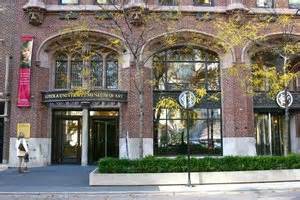Feb 4 2017 - Jun 3 2017
Loyola University Museum of Art
Chicago, IL
Artist and Psychologist Peter Gelker brings together the worlds of folk art and psychoanalysis in this evocative exhibition featuring more than 20 handcrafted whirligigs. Whirligigs are hand-turned or wind-driven devices that revolve in a cycle and function as either a toy, a work of art, an object of amusement, or a kinetic garden ornament. Continuing in a tradition that has existed for more than 500 years, this second generation whirligig artisan hand carves and paints these psychologically charged works focusing on political structures, religious beliefs, social relations and mythology.
Credit: Exhibition overview from museum website
Whether or not you go, Whirligigs: The Art of Peter Gelker captures a magical world. A breeze blows, a wheel turns, a soldier springs to life and spears a giant spider. Such fanciful woodcarvings are in the American Folk Art tradition of whirligigs, which is continued today by Peter Gelker in his twirling figures in the throws of myths, dreams, and nightmares.
Gelker was introduced to whirligigs by his father, a machinist, who learned to carve growing up in the Depression-era Midwest near the Ozarks. Gelker left rural life and manual labor for an academic life in California, where he enrolled in medical school and studied psychiatry. But his rural roots kept sprouting and flowering in his passion for crafting metaphors for the human mind―and its neurological substrate―which he encountered on his day-job. Thus Gelker senior passed a Folk Art tradition on to his son, who makes serious toys for a mad-cap world.
Whirligigs have a place in the history of psychiatry, in which Gelker holds an M.D., and psychoanalysis, in which he is certified. Sigmund Freud recognized that people use jokes to inflict pain (he collected “Jewish jokes”), but Freud also stressed the healing power of humor (The Joke and its Relation to the Unconscious, 1905). While being careful not to trivialize suffering, the creator of a comic antic encourages us to not take our troubles too seriously, makes us laugh, and helps us to see through to a brighter day. The role of toys and games in child development began being studied in the 1930s-40s by the Austrian analyst Melanie Klein, and after World War II, her student, the British pediatrician Donald Winnicott, expanded her work to include toys for adults (sports cars, designer clothes), in so-called object relations psychotherapy. Following this lead, today mental health professionals ask: Why do we collect certain objects? How do games of make-believe help us navigate our way through the labyrinth of life? Why do so many people find comfort in Folk Art? Why do Peter Gelker’s whirligigs make us smile?
Exhibition Venues & Dates
Feb 4 2017 - Jun 3 2017
Loyola University Museum of Art
Chicago, IL

